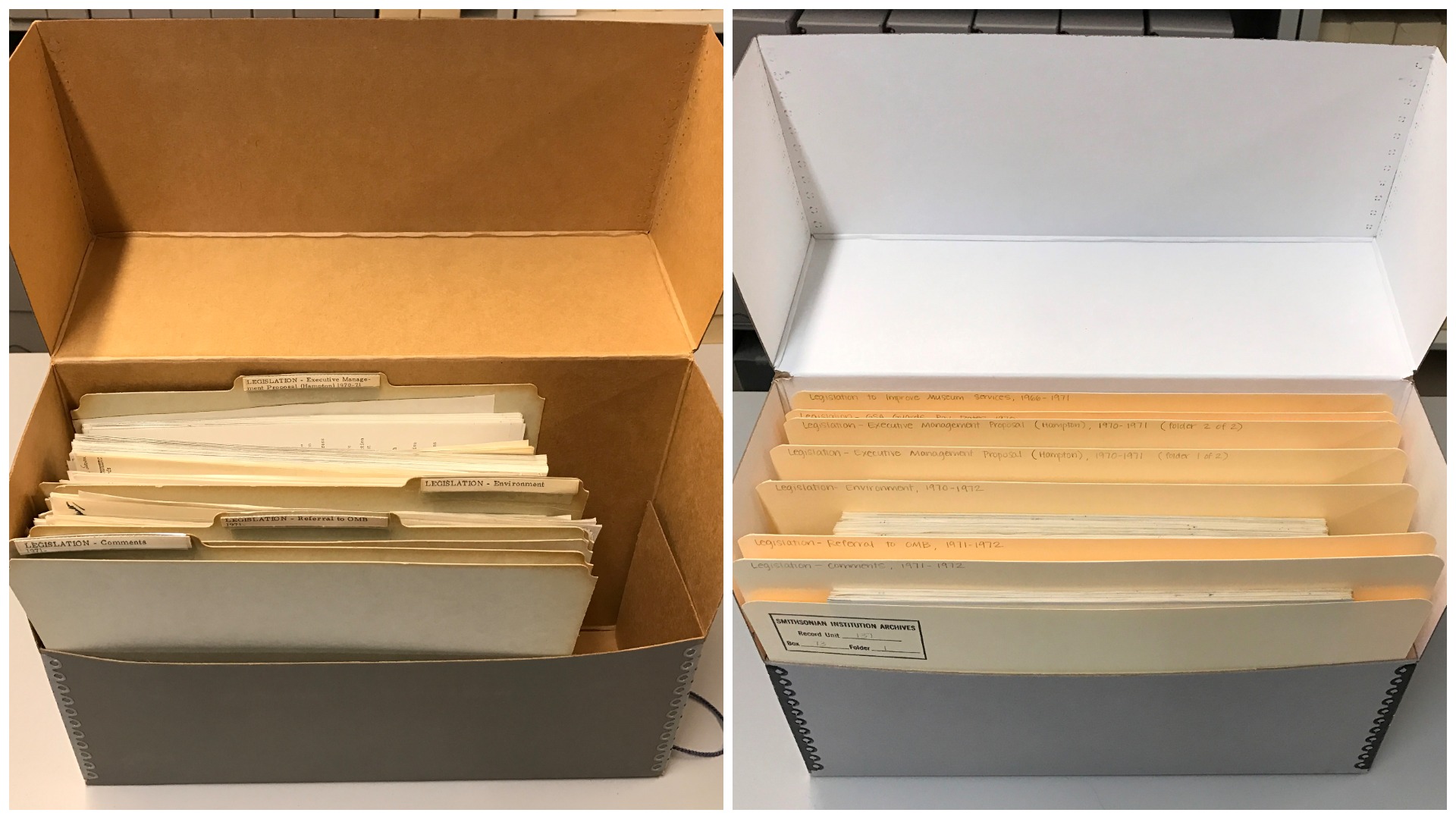Utilizing best practices for storage enclosures reduces handling and stabilizes deteriorated materials for long-term preservation and access. While the Archives most commonly uses manufactured standard enclosures, custom enclosures can also be created to facilitate safe handling.
Standard Enclosures
The most common enclosures used at the Archives are. Unbound paper-based collections are first stored in acid-free, buffered folders, creasing the bottom of the folder to accommodate the thickness of the records. Folders are then stored in our standard boxes. Photographs are typically stored in polypropylene album pages or polyester L-sleeves. Negatives can be stored in paper envelopes. The choice between paper and plastic is based on a number of factors—frequency of handling, vulnerability of format, costs, storage space, etc. The Archives follows standards developed by the Library of Congress for enclosures and maintains a list of vendors for preservation supplies.

Custom Housing
Some archival collections require custom housing due to difficult formats and sizes or condition issues. As with manufactured standard enclosures, the Archives follows the Library of Congress standards when choosing materials for custom housing solutions. Panoramic photographs and negatives are examples that require custom housing within the Archives. Following is a list of blog posts that look at custom housing projects at the Archives:
- Pennywise Preservation: Oversized Prints and Drawings
- Perplexing Panoramas: Taking Charge of Housing Oversized Collections
- Home Sweet Housing: Creating a Unique Enclosure for a Historic Photograph
- The Squeaky Wheel Gets the Grease: A Custom Storage Solution for an Unusual Collection
- Mounting Photographs with Earth Magnets
- Thanks(giving) for the memories—a preservation family project

Guidelines for Handling Records
The Archives' collections are made available to researchers in the on-site reading room located in the Capital Gallery Building in Washington, DC. Researchers must follow general handling rules while at the Archives:
- Hands must be clean and dry.
- Only use pencils for taking notes.
- Remove one folder from a box at a time. The folder should remain flat on the table. Turn documents one at a time, and please do not lick your finger to turn pages. Do not rest anything on top of books or documents, including phones, elbows, or notepads.
- Books should be used with book cradles to prevent damage to the spine.
- Stable documents may be photocopied on the flatbed of the copier. Never use the automatic feeder. Digital cameras for overhead photography are also permitted. The order of the documents must be maintained inside the folder, and the folders within the boxes.
